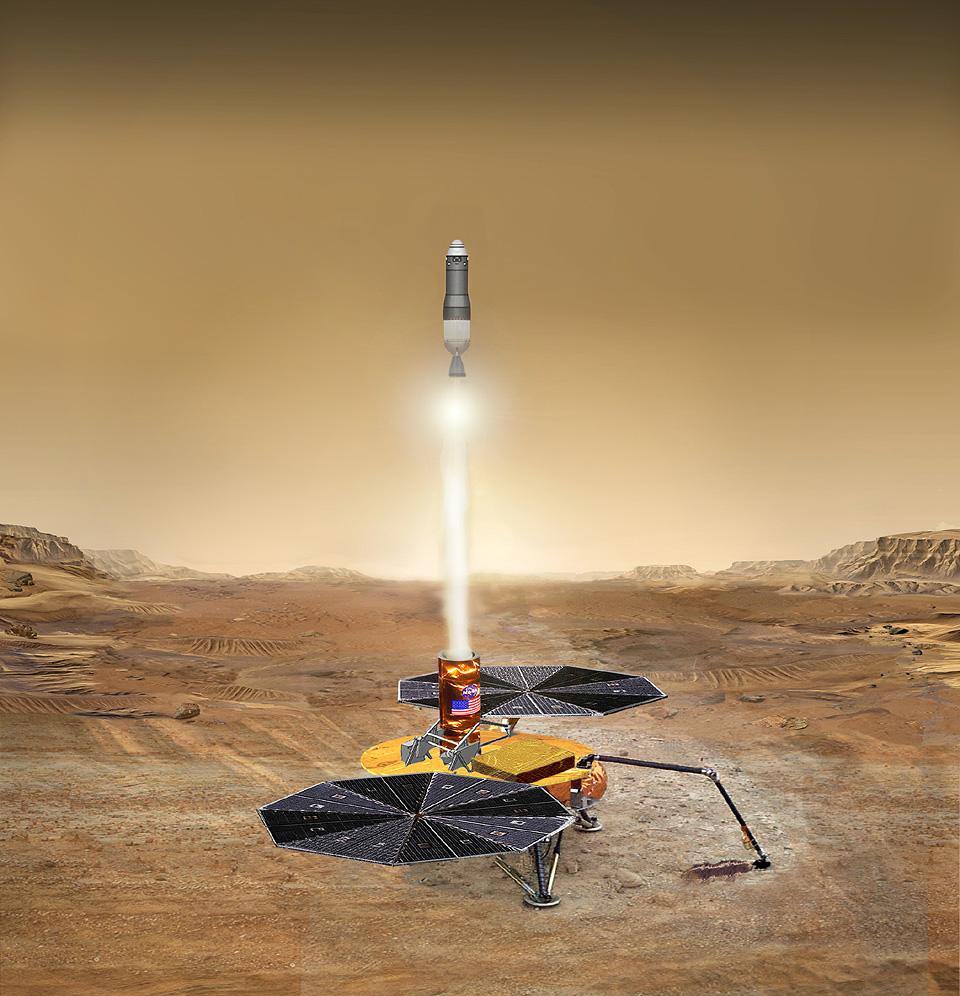The United States and European Space Agencies may start working together towards a joint Mars Sample Return mission that will bring Mars rocks back to Earth.
Our dream of setting foot on the Red Planet has been alive for quite some time, and it’s looking more likely than ever before. While our trips to Mars in the past have usually been one way affairs, this planned Mars Sample Return mission would send a spacecraft to Mars and retrieve it again – giving us a physical manifestation and evidence of our landing and impact on the red planet and giving scientists valuable material that they can study in order to better understand this potential expansion area for human society.
The move between the US and European space agencies to run the Mars Sample Return mission was announced at a meeting in Berlin, Germany, and also discussed the science goals and feasibility of this sort of mission.
The main question which scientists hope to answer when they get their hands on Mars rocks from a Mars Sample Return mission is whether or not the planet could have actually hosted life. We’re pretty sure that Mars is not currently hospitable to many life forms, but the planet’s environment was quite different millions of years ago – suggesting that we might have even seen some species analogous to those here on Earth if the conditions were correct.
While we have gotten our hands on some martian meteors and have collected a large amount of data from the various rovers and landers that have been sent to the Red Planet in the past, there’s only so much we can glean from those sort sorts of avenues. A successful Mars Sample Return mission would give us key insight into the composition of the planet’s surface in a way that couldn’t easily be accomplished without physically heading there and bringing samples back to our surface directly from the planet itself.
The next step of the Mars Sample Return mission would be to send a craft that would retrieve samples from The Martian surface, blast them into space in a capsule, and then have them land safely on Earth. This is a novel way to address the problem of our difficulty making round trips at this point in time, and would perhaps make a Mars Sample Return mission more feasible before we actually have the technology to send a human to Mars and back.
With new samples from the return mission, the team could potentially unlock the secrets of Mars and allow us to understand more in ways that weren’t possible before. While our existing data is certainly robust, there’s really no substitute for managing to get our hands on a sample directly from the surface that can then be analyzed using machines that are far too power-hungry for inclusion on a trip to the surface itself – more than 55 million kilometers away.
The announcement as also made at the ILA Berlin Air and Space Show which was taking place at the same time as the Mars Sample Return meeting. Dr. Thomas Zurbuchen, NASA’s associate administrator for science, stated that “We want to partner with the European Space Agency, but also with other partners…we will at every point look at what is available in the commercial market. NASA has no interest whatsoever in developing things that we can buy.”
Dave Parker, the director of human and robotic exploration at ESA commented that “it’s very important that every mission we send to Mars discovers something slightly unusual. It’s on the basis of that that we tend to plan the next mission or next missions.”
Hopefully, with this collaboration between NASA and ESA, the Mars Sample Return mission will turn up some new data that will give us the reasons we need to continue running missions to the distant planet. With companies like Elon Musk’s SpaceX rapidly approaching testing for a manned trip to Mars, having a clear sense of what we can expect on the surface as well as the ability to unlock secrets of the planet’s past would certainly be beneficial.
Over the next decade, it’s looking more and more likely that regular trips to Mars will become common rather than the stuff of science fiction – at least for scientists and private space businesses. The rest of us have a while to wait before space travel becomes accessible, but we’re certainly moving closer and closer towards that future.





